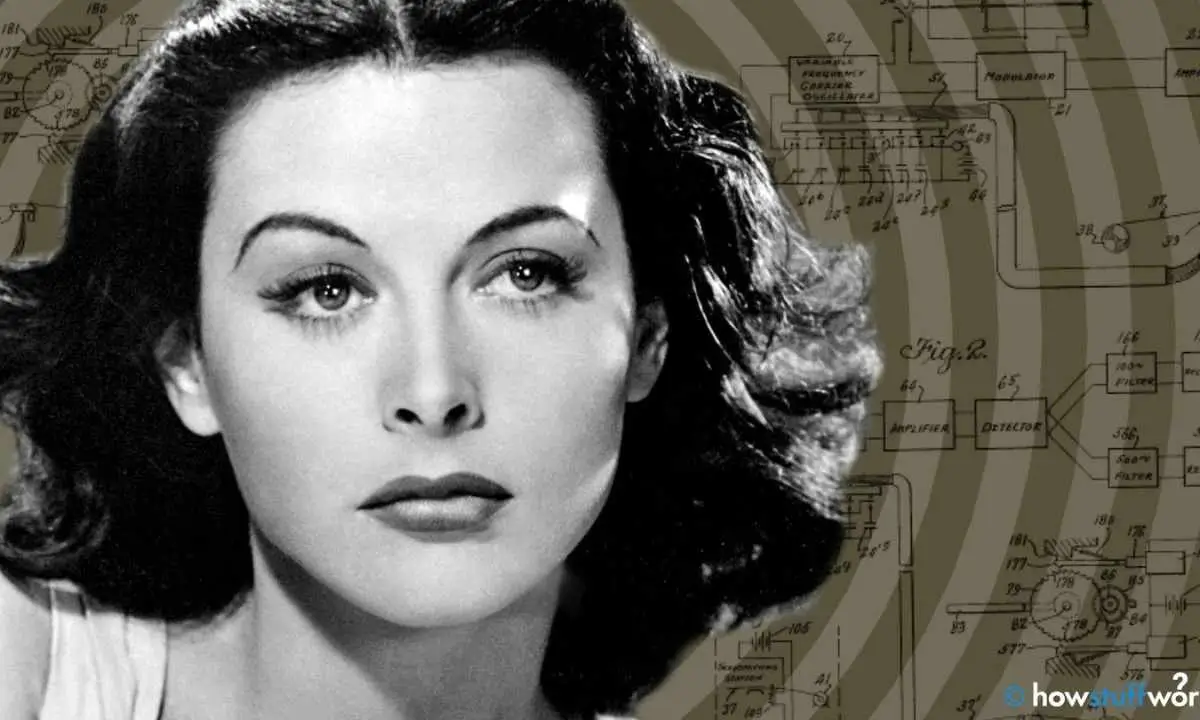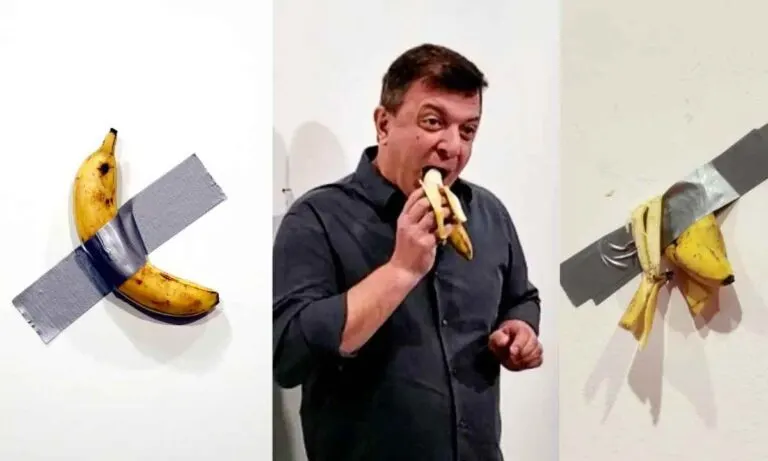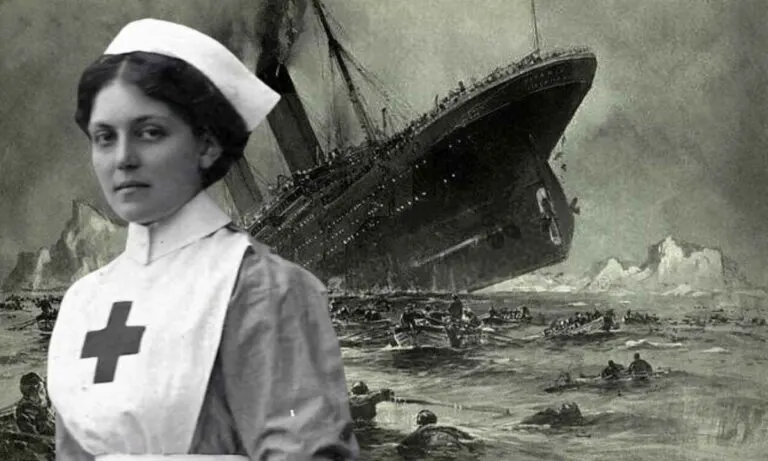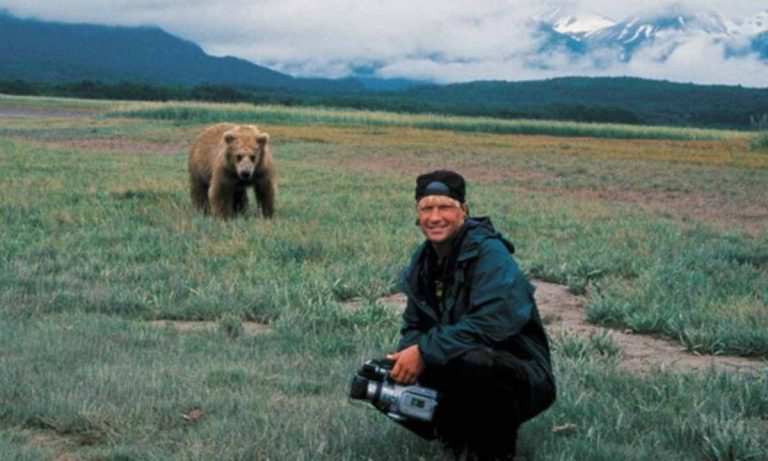The Hollywood Movie Star “Hedy Lamarr” Invented WIFI, Bluetooth, and GPS Technology!
Hedy Lamarr, known for her stunning performances on the big screen, also made an incredible mark in the world of science. Beyond her successful acting career, Lamarr was a visionary who invented frequency-hopping spread spectrum technology, a precursor to modern communication systems like Wi-Fi, Bluetooth, and GPS. While her beauty made her a Hollywood icon, her brilliance made her a pioneer in wireless communications. Let’s explore Lamarr’s early life, her journey into science, and her lasting technological contributions.
Hedy Lamarr’s Early Life and Acting Career
Born Hedwig Eva Maria Kiesler in 1914 in Vienna, Austria, Hedy Lamarr exhibited an early curiosity in both performance and science. She was the only child of a wealthy secular Jewish family. Her father was a bank director while her mother was a concert pianist. As a child, she often dismantled and reassembled mechanical objects to understand how they worked, a habit encouraged by her father. On long walks through the bustling streets of Vienna, Hedy’s father would explain how the streetcars worked and how their electricity was generated at the power plant. At five years old, Hedy took apart a music box and reassembled it piece by piece. However, even if Hedy had wanted to be a professional engineer or scientist, that career path wasn’t available. This was the case for Viennese girls in the 1930s. Instead, teenage Hedy set her sights on the movie industry.
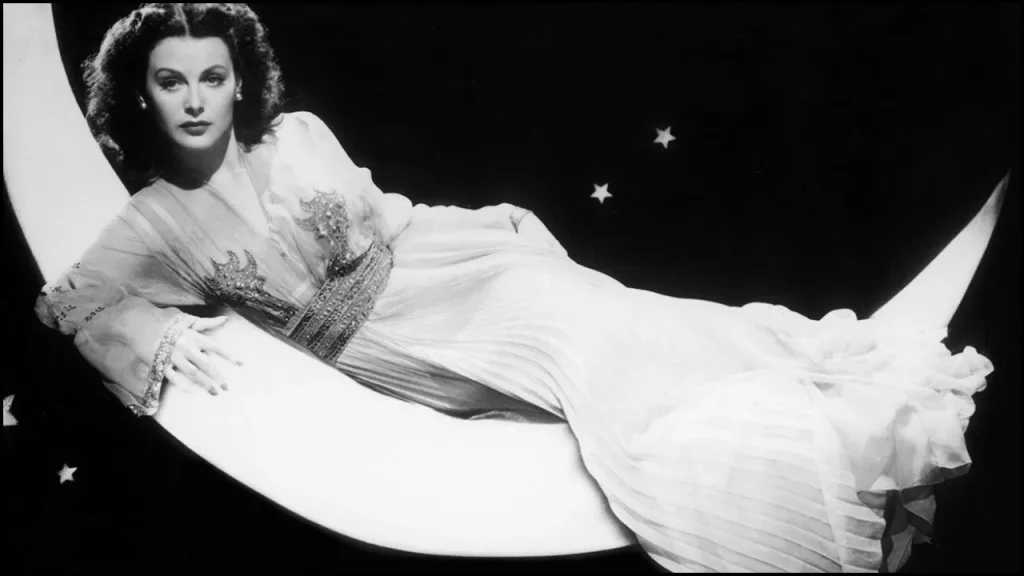
Hedy started as a script girl, but quickly earned some walk-on parts. The Austrian director Max Reinhardt took Hedy to Berlin. By 18, Lamarr had earned international fame for her performance in the controversial film Ecstasy (1933). This movie drew attention for its daring scenes. After a failed marriage she fled Nazi-occupied Austria to the USA. Her career took off from there, but she wasn’t just interested in the glitz and glamor of Hollywood. Lamarr became a star in films like Algiers (1938) and Samson and Delilah (1949). However, as Lamarr herself expressed, she felt unfulfilled by her roles. “Any girl can be glamorous. All you have to do is stand still and look stupid,” she said, illustrating her frustration with being typecast based solely on her appearance.
Lamarr’s Deep Interest in Science and Inventions
While working in Hollywood, Lamarr began to channel her energy into inventing. She was never formally trained as an engineer or mathematician, yet her inventive mind continuously sought to solve practical problems. After working 12- or 15-hour days at MGM Studios, Hedy would often skip the Hollywood parties and instead sit down at her “inventing table.”Hedy had a drafting table and a whole wall full of engineering books. It was a serious hobby,” says Richard Rhodes. He wrote her award-winning biography.
Hedy had a drafting table and a whole wall full of engineering books. It was a serious hobby
Richard Rhodes
One of her early ideas was a tablet that could dissolve in water to create a carbonated drink. This was for US soldiers battling in the front. Though this particular invention didn’t take off, it was just the beginning of her exploration into more advanced technologies. Also, she designed a tissue box attachment and a light-up dog collar. In addition to this Hedy devised a special shower seat for the elderly that swiveled safely out of a bathtub.
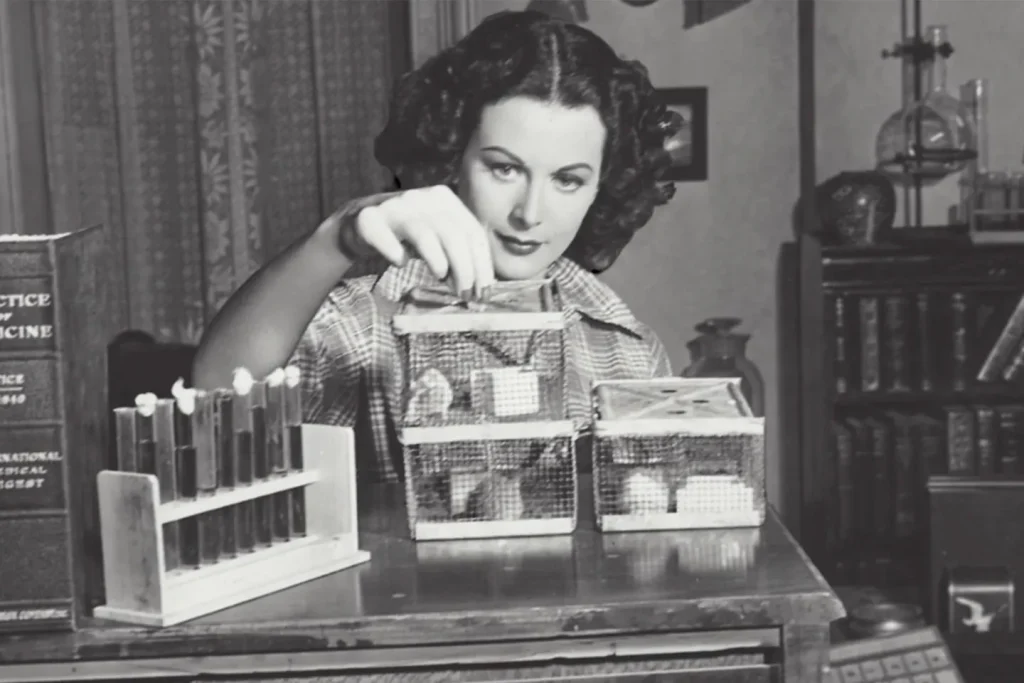
Her most significant work came during World War II. Disturbed by the rise of Nazi Germany and the ongoing war, Lamarr was eager to contribute to the Allied war effort. She applied the technical knowledge she gained from her first marriage to arms manufacturer Friedrich Mandl. During this marriage, she participated in conversations about military technology. These discussions, though restricted by her husband’s controlling nature, fueled her determination to find practical solutions to the problems the Allies were facing.
How Hedy Lamarr Became Interested in Torpedo Guidance
During the war, a great challenge threatened the US Navy. This was the threat of German U-boats. Nazi submarines frequently interfered with the guidance systems of radio-controlled torpedoes, jamming the signals and rendering the weapons useless. Lamarr realized that one must find a solution d to secure radio communications and protect these critical military operations.
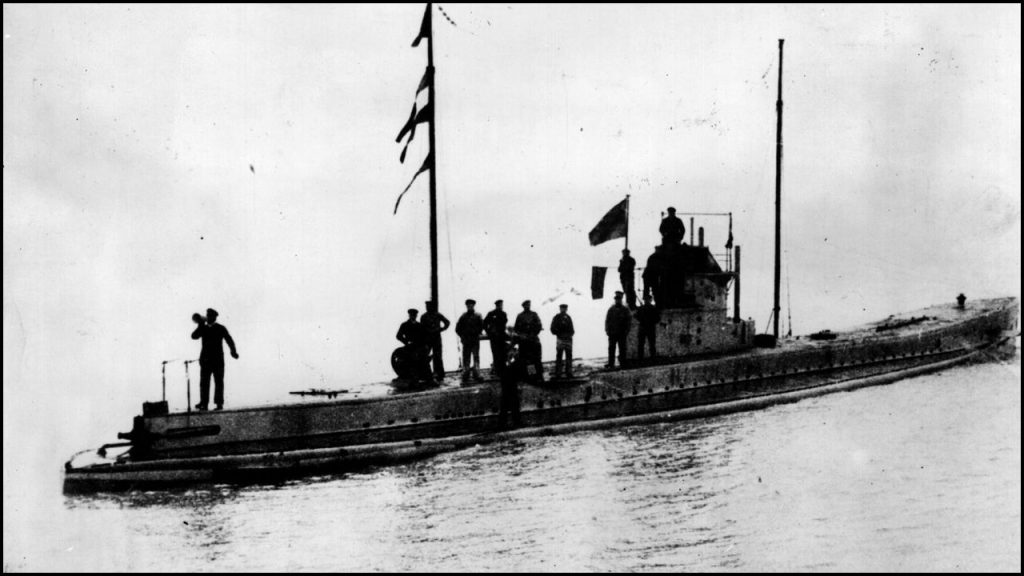
Using her knowledge of both science and military technology, Lamarr turned her attention to creating a method that could prevent jamming radio frequencies. She understood that if the radio frequency could constantly change, it would be nearly impossible for the enemy to interfere with the signal.
Hedy Lamarr’s Collaboration With Composer George Antheil
Lamarr found a collaborator in an unlikely place: her friend George Antheil, an avant-garde composer and inventor. Antheil who experimented with synchronized player pianos, saw an opportunity to apply his musical knowledge to radio signals. Together, the two developed the idea of frequency hopping—a method by which a radio signal would switch between multiple frequencies to avoid interception.
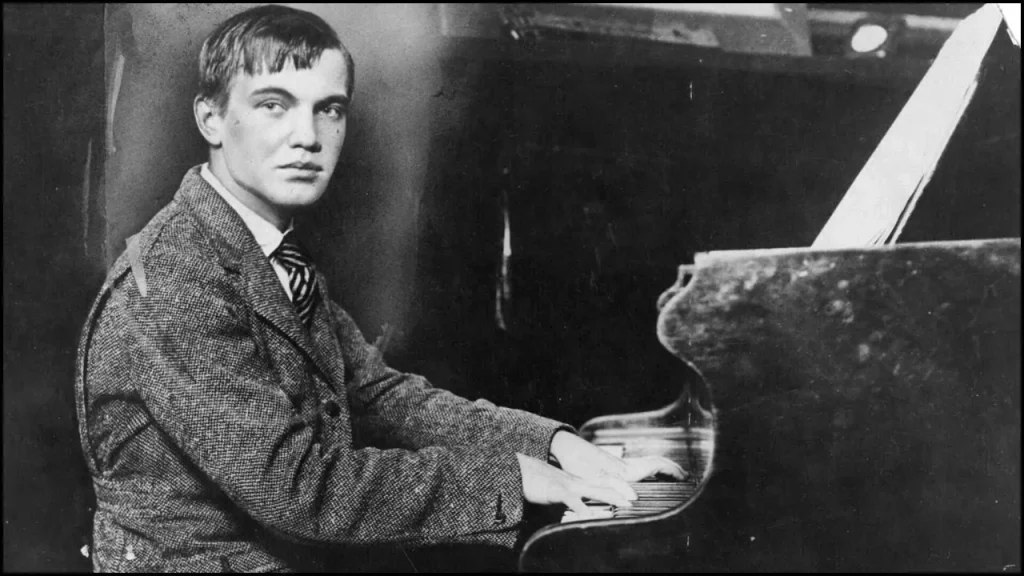
Lamarr and Antheil’s invention, which they patented in 1942, utilized 88 different frequencies—mirroring the number of keys on a piano. The system would synchronize between the transmitter and receiver. It ensured that the Germans could not jam the signal nor could they intercept it. The pair submitted their design to the National Inventors Council, and Lamarr even offered it to the U.S. Navy. However, the technology was not adopted at the time, as the Navy deemed it too difficult to implement.
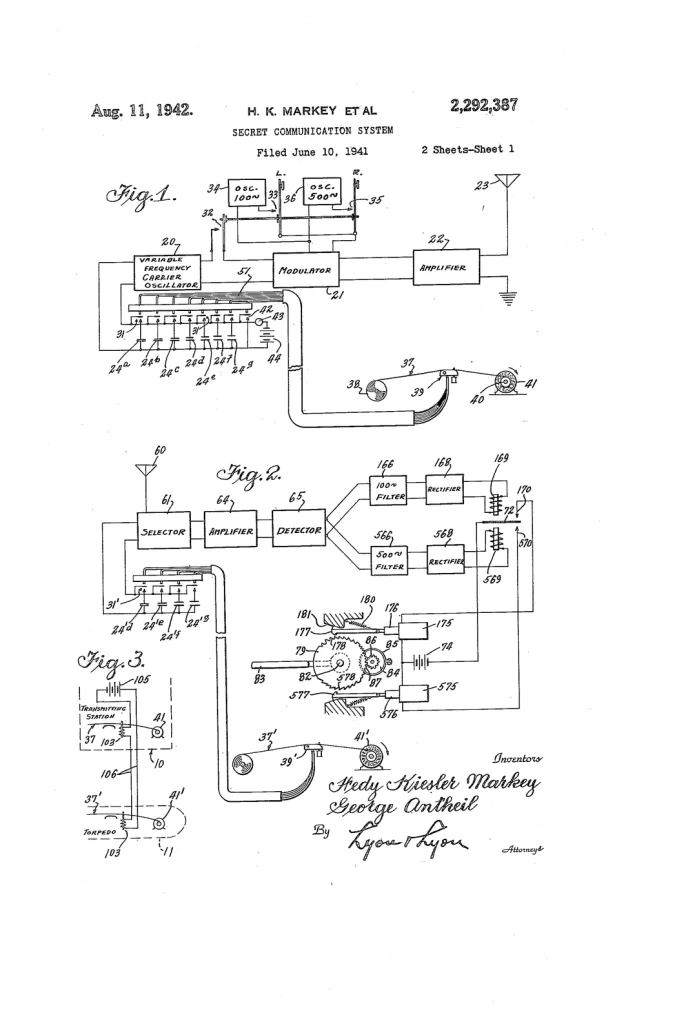
The Impact of Frequency Hopping and Its Connection to Modern Technology
Though Lamarr and Antheil’s frequency-hopping technology wasn’t used during World War II, it became highly relevant in later years. In the 1960s, engineers revisited the concept, and it was incorporated into secure military communications. Over time, frequency hopping became the backbone of modern communication technologies, including Wi-Fi, Bluetooth, and GPS.
The spread spectrum technology they developed is essential for avoiding interference in today’s wireless networks. While Lamarr’s invention wasn’t recognized during her lifetime, its impact on the modern world is undeniable. Richard Rhodes said, “Hedy’s pioneering work laid the foundation for many forms of wireless communication, transforming the way the world connects.”
Hedy’s pioneering work laid the foundation for many forms of wireless communication, transforming the way the world connects
Richard Rhodes
Hedy Lamarr’s Legacy
For many years, Lamarr’s contributions to science were largely forgotten, overshadowed by her status as a Hollywood icon. However, her work eventually gained recognition. In 1997, she and Antheil were awarded the Pioneer Award by the Electronic Frontier Foundation for their groundbreaking work in communications. Lamarr, then in her 80s, responded by saying, “It’s about time.”
Today, Lamarr’s legacy extends far beyond her filmography. In 2014, she was posthumously inducted into the National Inventors Hall of Fame, cementing her place as one of the most influential inventors of the 20th century. As Wi-Fi, Bluetooth, and GPS continue to shape the way we live, Lamarr’s genius continues to impact billions of people across the globe.
Conclusion
Hedy Lamarr was not just a Hollywood star; she was a brilliant mind whose scientific achievements are still felt today. Her invention of frequency-hopping spread spectrum technology laid the groundwork for many of the communication systems we rely on in the 21st century. Her story is a powerful reminder that innovation can come from the most unexpected places and that even those known for their beauty can possess incredible intellect and vision. Lamarr’s contributions to science and technology will continue to be celebrated for generations to come.
Read Also:
This Town In The US Has Been Burning For 60 Years!
A Man Rescued A Newborn From A Dumpster Only to Find Out He Is The Father!

